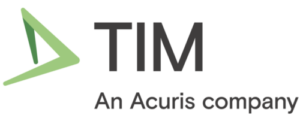Compliance Update – May 2017
31st May 2017What we’re hearing from the TIM network on MiFID II’s research unbundling
TIM Group have a unique position in the marketplace, distributing and analysing ideas from 4000 individuals at 300 brokers to 250 buy-side firms. From our conversations with both the sell-side and buy-side we have gained a unique perspective of the trends in our industry. Here we share what we’re hearing and seeing with regards to MiFID II’s unbundling of research and execution.
What are the pricing models emerging around research unbundling?
The price discovery process started early in 2017. Some identifiable commercials models are starting to emerge:
- All-you-can-eat – this model is what both buy-sides and sell-sides are used to. The buy-side pays a fixed fee for full access to all of a broker’s research and analysts.
- Tiered – a tiering system with differing levels of product and related services. Tiers may include access to (all) research reports, pay for hours access to analysts, and pre-paid access to analysts up to a limit.
- A la carte or pay-as-you-go. We see some buy-sides pushing to pay for services used. This model seems less attractive to larger brokers, so it may be a while before significant numbers of research providers sign up to this approach.
How is the industry approaching valuation?
We’re seeing a wide variety of valuation methodologies and as yet, few deals have been agreed
- Consumption – for example base payments on how many reports and how much analyst time a client consumes. Brokers can generally readily calculate these statistics, and many systems help to collate and provide them to the buy-side. While some buy-sides appear to be happy with payments related to consumption, others may wish to align themselves more with the spirit of the regulation and use qualitative or performance-based measures instead of or in addition to usage metrics.
- Qualitative – best practice already adopted in some buy-sides is for consumers to rate research in some way, e.g. a 5-star rating.
- Performance-based – another approach is to measure the performance of the research. This is the primary method favoured by the quant funds, and is applied to their use of trade ideas and increasingly research: payment is directly related to the alpha in the ideas.
Analyst time is valued highly relative to reports by both buy-side and sell-side.
Who are the winners and losers?
While some of the largest buy-sides may buy all research content available, many others will use fewer research providers leading to a reduction in industry research spend. Research providers known for excelling in their class, whether it be the best regarded bulge or the niche specialist boutique providers, are feeling confident. Those providers with less highly regarded products may struggle.
How are buy-sides approaching budgeting?
If buy-sides want to pay for research from client funds they need to set a forward-looking research budget under MiFID II and inform their investors of this budget. One approach is to derive the implied research payment from historical commission rates, using the result to inform the 2018 budget. While this is probably not what the regulator had in mind, it may be a practical approach in the short term, while valuation and other questions are settled.
How does all this affect trade ideas and payment for sales coverage?
Trade ideas have proven alpha and add value to investment processes, which means they can be paid for from client funds. In fact, they may be the only way to pay for sales coverage from client funds.
In the negotiations between buy-side and sell-side that we are aware of, trade ideas programs are being viewed separately from the research discussion. Today, brokers may provide trade ideas to buy-sides to which they don’t provide research, and vice-versa. This looks set to last into the future. Today, most buy-sides pay for trade ideas on a performance-based model; the performance of an individual or firm’s ideas determines how much they get paid. Everything we see suggests that this approach will continue. Indeed, some buy-side firms may adopt this kind of metric as part of their research evaluation – particularly quant funds.
If you would like to hear more on this topic, feel free to get in touch. You can also view our recent buy-side webinar on this topic.
TIM Group in the press: “alpha capture” … gaining traction
“In a world turned upside down by new rules on how research is paid for, this is one model — known as “alpha capture” — that is gaining traction.”
Read how trade ideas are now a “globally accepted practice” in this Bloomberg article.
TIM Group at MiFID II summit for wealth managers
TIM Group Founding Partner Colin Berthoud joined a panel discussing the implications of MiFID II for wealth managers, particularly the effect of unbundling, organised by ClearView Publishing (publishers of Wealth Briefing) on 24 May. Colin told 120 attendees that the implications for wealth managers would be significant:
- Less research available, as some research providers likely to exit the industry
- Remaining research will need to be paid for
- “Embargoed” research may disappear
TIM Group at MiFID II Implementation conference
The European Institute and the Global Fixed Income Institute are jointly hosting a conference for COO/CFOs in Copenhagen on the 21 June called “A Focus on MiFID II Implementation”. TIM Group will be part of the panel discussing “The Valuation Process” where two case studies will be used to help frame the choices and challenges buy-sides will face in valuing unbundled research. If you are interested in finding out more about the conference or want to attend please contact us.
